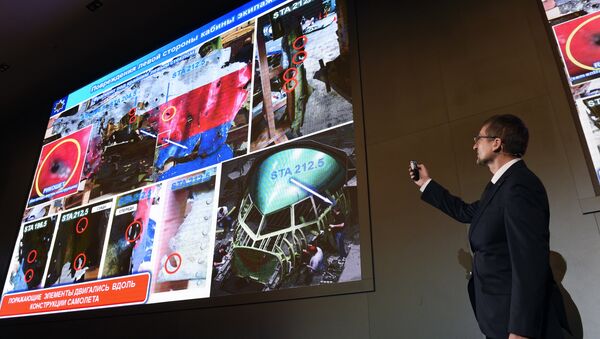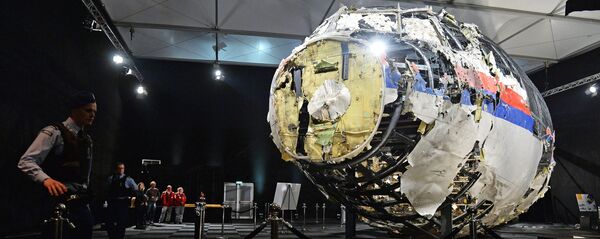According to the draft, Moscow believes that a "modern Russian missile" could not be the cause of the crash.
Bellingcat in the past has published several reports on the tragedy, all of which accused Russia and which were dismissed by Moscow, while Dutch investigators published a report in October 2015 claiming that the Malaysia Airlines aircraft appeared to have been downed with a Russia-produced Buk surface-to-air missile system. The report did not identify the exact location from where the missile was fired.
Almaz-Antey, the manufacturer of the Buk missiles and Russia's biggest defense contractor, conducted a separate probe into the crash, finding that the missile that hit the plane could only have been launched from the region of Zaroshchenske, controlled by Kiev forces at the time of the incident.
NOT MODERN RUSSIAN MISSILE
The authors of the draft agree with the thesis that the aircraft could have crashed after being hit by a Buk missile. However it says that the missile could not be the new Russian 9М317 type, which is not used in Ukraine but is in service with the Russian military.
The Buk family of missiles were first produced in the Soviet Union and have since been in service in former Soviet states, including Ukraine. Russia’s army currently operates newer and upgraded versions of Buk, such as the 9М317.
"Even if a Buk missile is to blame, it could not be the ‘modern Russian missile’ 9M317. The main distinguishing feature of MH17 damaged fragments is the holes from the damaging elements of a size of 13 or 14 millimeters," the draft said, as quoted by the paper.
It rules out the involvement of the 9M317 in the accident as the missile does not have any elements that could cause such damage, the draft said.
MISSILE LAUNCH POINT CONTROVERSY
The draft also denies the "categorical" statement made by Bellingcat that the missile was launched from an area of Ukraine controlled by the pro-independence militia.
"The possible launch area was calculated [by Bellingcat] through the technique of inverse simulation… Any other circumstantial evidence… were not taken into consideration. Only technical details of the design and technical documentation were considered," the draft said.
According to the draft, Almaz-Antey denied the possibility of the missile being launched from the Snezhnoye town in Ukraine, citing investigative experiment results. The experiment reportedly showed that the damage to an aircraft caused by the missile launched from Snezhnoye would not match the damage made to the Malaysian Airlines plane.
The experiment also reportedly provided "visual confirmation" of Almaz-Antey claims that if a Buk missile had been launched from Snezhnoye, the aircraft would have been inevitably penetrated by it, which contradicts the evidence data of the crash.
RUSSIAN MISSILES’ DATA DECLASSIFIED AT SECRET
According to the draft, the Almaz Antey investigation has revealed that the Dutch investigators had been using often inaccurate information concerning the Buk missiles in their probe into the crash. Taking this into account, the Russian side has decided to take an unprecedented step – to declassify all data on the 9M38 and 9M38M1 missiles, the draft revealed.
"All information on the 9M38 and 9M38M1 missiles, requested by the Dutch experts, was forwarded to the experts of the commission," the draft said.
RIGGING IN TECH DATA
The authors of the draft denied Bellingcat’s "most powerful argument" against the Russian version of the crash – the opinion of technical experts.
"There are certain complaints concerning how the survey was conducted by the technical experts of the Dutch commission," the draft said.
According to the text of the draft, certain technical specifications that the Russian side had passed on to the commission’s experts were either ignored or distorted if they "did not fit the main version."
According to the draft statement, the experts changed data on found fragments of the surface-to-air missile that could have caused the crash. The Russian side also blamed the Dutch investigators for not providing the details on the fragments in the Draft Final Report on the crash, submitted to Russia, which were published in the final version of the report.



